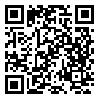Volume 9, Issue 4 (2018)
LRR 2018, 9(4): 253-269 |
Back to browse issues page
Download citation:
BibTeX | RIS | EndNote | Medlars | ProCite | Reference Manager | RefWorks
Send citation to:



BibTeX | RIS | EndNote | Medlars | ProCite | Reference Manager | RefWorks
Send citation to:
Goldani G, farsian M, Khajavy G H. Impact of Student-Centered learning on Shyness in Foreign Language Classroom and Student Performance. LRR 2018; 9 (4) :253-269
URL: http://lrr.modares.ac.ir/article-14-1378-en.html
URL: http://lrr.modares.ac.ir/article-14-1378-en.html
Impact of Student-Centered learning on Shyness in Foreign Language Classroom and Student Performance
1- Master's degree in French Language Education, Tarbiat Modarres University, Tehran, Iran
2- Associate Professor of French Language and Literature, Ferdowsi University of Mashhad, Iran , farsian@um.ac.ir
3- Assistant Professor of English Language Education, University of Bojnord, Bojnord, Iran
2- Associate Professor of French Language and Literature, Ferdowsi University of Mashhad, Iran , farsian@um.ac.ir
3- Assistant Professor of English Language Education, University of Bojnord, Bojnord, Iran
Abstract: (4144 Views)
Shyness is considered to be one of the inhibiting factors paralyzing the students during language conversation courses. Overcoming such an obstacle demands much effort and attention from both the teacher and the student. So far, many practices have been proposed as remediation and some proved to be successful; however, this research has tried to present a student-centered model which its main concern is group work and in-group progress. Therefore, a number of 51 French language students who had passed the French conversation course were asked to respond to a questionnaire including both Stanford’s Shyness and Willingness to Communicate tests (WTC). The students were studied in two groups one as the experimental group, the other as the control group without pretest and by using a posttest only design. The experimental group received our Student-Centered model. Subsequently the collected data was analyzed by t-test. The results indicate that teaching communication skills to students could help them improve their classroom efficiency.
Keywords: Foreign language teaching, Classroom shyness, Willingness to communicate, Student-Centered Learning, Student Performance
Send email to the article author
| Rights and permissions | |
 |
This work is licensed under a Creative Commons Attribution-NonCommercial 4.0 International License. |







